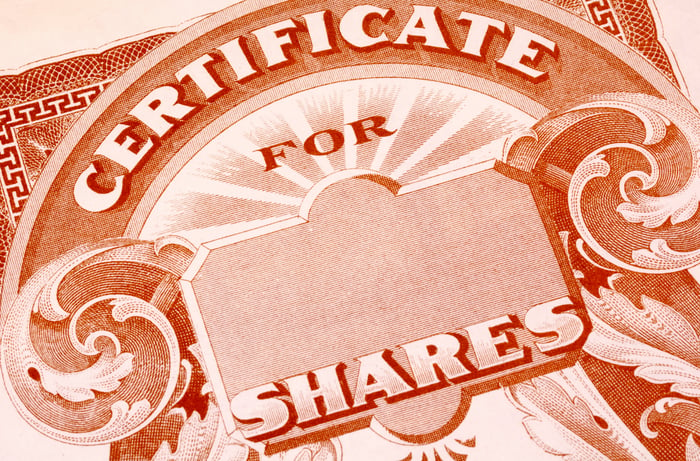1896 was an eventful year. It marked the first modern Olympic games in Athens, Greece, as well as the very first time a doctor used radiation as a treatment for breast cancer. It also happens to be the year that the now-iconic Dow Jones Industrial Average (^DJI 0.64%) came into existence.
Tomorrow, May 26, will mark the Dow's 122nd birthday -- but since it falls on a Saturday, we're jumping the gun and celebrating a day early.
A lot has changed over the past 122 years
Quite a bit has changed for the stock market's most watched index over the past 122 years. For instance, the original index, created by Charles Dow, was only comprised of 12 components, and there have been 51 separate instances over the past 122 years where components have been added and correspondingly dropped from the index.

Image source: Getty Images.
Only industrial conglomerate General Electric (GE 0.90%) has managed to stay in the Dow since its inception on May 26, 1896. The other 11 original components have long since been removed. However, given General Electric's recent business struggles and its need to refocus its operations, it currently runs the risk of being booted from the Dow at some point in the future. Behind GE, oil and gas giant ExxonMobil and consumer goods behemoth Procter & Gamble have the next longest tenure at 90 years and 86 years, respectively.
The number of components that comprise the Dow have expanded twice, as well. As noted, there were just 12 components when the index was formed in 1896. By October 1916, the index was expanded to include 20 companies. In October 1928, the index again was expanded to 30 components, which is where it sits today.
The Dow also has advanced significantly from its earlier days. It first crossed the 100-point milestone on Jan. 12, 1906 and advanced above the 1,000-point barrier on Nov. 14, 1972. On a compound annual basis since first hitting 100 points in 1906, the Dow has averaged an annual increase of just over 5%. That's certainly better performance than bonds and commodities (like oil and gold) have had over that stretch.

Image source: Getty Images.
The Dow and the market, in general, have also seen a significant decline in volatility over time, primarily as a result of the ease of access to information. During the 1920s and 1930s, liquidity and order imbalances may have been an issue, given that trades were completed by traders on the floor of the New York Stock Exchange.
Investors also had little means to receive financial news beyond reading a newspaper or ordering an annual report. Today, however, computer trading platforms ensure liquidity and order balance, while the internet puts all sorts of information -- balance sheets, income statements, earnings reports, and management commentary -- just a click away.
Yet a lot has remained the same
For as much as the Dow has changed, some things have stayed the same. For example, despite its components having pretty much always been multinational companies, the Dow still fails to be representative of all industries. Even with 30 highly diverse components today, real estate, real estate investment trusts, and utilities have absolutely no representation in the Dow Jones Industrial Average. This is one reason why the S&P 500 (^GSPC 1.29%), which is comprised of a little over 500 stocks, often is viewed as a better gauge of the health of the U.S. economy and stock market.
Also, just as when it was founded, the Dow still is a point-weighted index. What this means is that the share prices of the 30 components determines the value of the index. Each dollar in share price, based on the current Dow divisor of 0.14523396877348, works out to approximately 6.885 Dow points. This divisor is regularly updated to reflect stock splits, spinoffs, and other major business changes.

Image source: Getty Images.
The issue with a point-based average rather than a market-cap-weighted average like the S&P 500 is that it gives more credence to companies with a higher share price rather than a larger market cap. For example, Boeing has a nearly $359 price per share, which equates to about 2,472 Dow points. This isn't to say Boeing isn't a needle mover by any means -- it currently sports a $210 billion market cap. However, it has virtually the same market cap as pharmaceutical giant Pfizer ($212 billion), yet around 10 times the influence on the Dow. Pfizer's share price is only $35.94, which works out to only 247 Dow points. This doesn't make a lot of sense.
Ultimately, the Dow is rich with history, but it's nothing more than a novelty in terms of usefulness to investors these days. If you want an index truly representative of the American economy, the S&P 500 is where investors should focus their attention.





